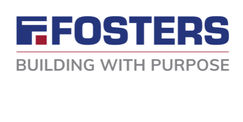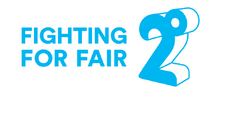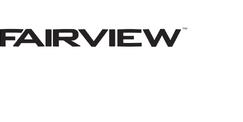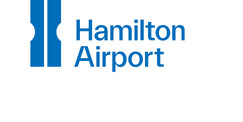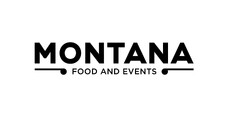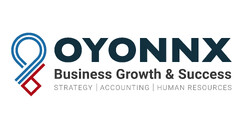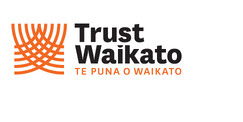Thought Leadership shaping the future of our region
An occasional platform for a piece written by members for members on key topics to challenge and inform robust debate about the Waikato.
AI in the Waikato
This article is the third in a three-part article series exploring AI in the Waikato — examining the opportunities it presents, the disruption it brings, and what comes next. This series is designed to challenge thinking, inform discussion, and spark robust debate about the future of our region in an AI-driven world.
The real AI revolution: People, not platforms
By Igor Matich, Founder and Executive Director, Dynamo6
When I founded Dynamo6 in 2012, we were in the middle of the cloud computing revolution. Cloud computing was a shift towards more efficient and accessible technology. The change we face now is far more profound. This isn't just about adopting a new platform; it's about fundamentally integrating a new form of intelligence into our daily work and how we live. The most important conversation we need to have isn't about the technology itself, it's about how we support & empower our people to discover new ways of working and enable a culture of innovation.
Beyond the productivity headlines
AI's impact won't be a simple productivity boost. It will force a complex realignment of roles and skills. While AI will automate repetitive tasks and free up some teams to focus on high-value work and strategy, the change in other roles will be more subtle. For business leaders, the opportunity is less about reducing staff costs, but redesigning business processes and investing in the skills teams need to thrive. It's not as simple as flipping a switch and buying some licenses; AI requires creative thinking and genuine strategy. However, what is clear is that smaller, AI-enabled companies will be able to push boundaries and compete with larger rivals.
Navigating fear and creating opportunity
Through our AI adoption and change management work with New Zealand organisations, we see firsthand the wide range of emotions this technology evokes, from resistance to genuine fears about job security. These concerns are valid, and the technology is already good enough for some use cases; however, it still requires human oversight.
Ultimately, AI will unlock a whole new level of creativity and innovation. Google DeepMind’s ‘AlphaFold’ model accurately predicts protein structures from their amino acid sequences, revolutionising biology and accelerating drug discovery. AlphaFold does in days what used to take years. Inevitably, this will make some jobs redundant and simplify many tasks. But like all revolutions, it presents opportunities for those ready to seize them.
At Dynamo6, we use AI to develop code faster, find security risks more easily, capture and transcribe meeting notes, perform deep research, and support document creation. These tools allow our team to tackle bigger projects, build smarter applications, and deliver greater value to customers faster.
Despite these advances in business practice, the productivity gains from these tools are more modest than what the headlines suggest. At the moment, we are seeing overall productivity gains of roughly 20-30%, even with a continuous focus on learning and testing, with the greatest potential concentrated in specific tasks such as finding security risks faster. What we are seeing aligns with the “AI in action report” published by NZ AI Forum in March 2025, which shows that current productivity gains are often task-specific and vary between businesses.[1]
[1] The report found that while 93% of businesses saw efficiency gains from AI, the nature of these gains was highly task-specific. For example, a software development firm reported a 40-50% productivity boost, while a recruitment agency noted a 15% reduction in time spent on administrative tasks. See AI Forum New Zealand, AI in Action: Exploring the Impact of Artificial Intelligence on New Zealand's Productivity, Report 2 (March 2025), pp. 6, 27, 29.
Building a foundation for innovation
To turn fear into empowerment, you need a foundational strategy. Many AI projects fail by deploying tools without a clear focus on people, business value, and use case definition. AI is not magic. It needs accurate data and trained people to provide context and oversight. Success requires a culture where teams feel safe to experiment, which starts with having your data ready and your people trained. Although legacy systems can be a hurdle, modernising them is more accessible than ever with global hyperscalers now in New Zealand.
The critical role of security
The empowerment that AI offers must also be wrapped in strong security. AI is a double-edged sword. For every capability, it can create new security challenges. Your AI strategy must include ethics, security, and data management guardrails to create a safe environment for your team to explore. You don't want employees uploading private company or customer data to consumer versions of tools like ChatGPT, as that information could be used to train their models.
This is fast-evolving technology, and whilst something may not quite work today, we've seen firsthand how new updates are being released rapidly and improving overnight. Leaders need to be persistent and deliberate, and be aware of the security risks.
How leaders can get started
To stay ahead, leaders in the Waikato must look inward and educate themselves so they can empower their teams. The key is to think about how your employees and customers will use these new tools, and what that means for the future of business. Here are three areas to focus on:
Lead from the top
Leaders should experiment with tools from Google, OpenAI, and Anthropic. The AI world is much bigger than just Microsoft Copilot.
Identify which roles within your business could benefit most.
Find the early adopters on your team.
Create a real adoption plan
Build a clear strategy with timelines and metrics to measure value.
Include training, security, policy, and data governance from the start.
Ensure your technology systems are AI-ready.
Develop an AI roadmap
Brainstorm with your teams to find where AI could deliver value.
Score these ideas based on complexity, cost, and potential impact.
Create a team of AI champions, start with small wins, and measure your progress.
ENDS
[1] The report found that while 93% of businesses saw efficiency gains from AI, the nature of these gains was highly task-specific. For example, a software development firm reported a 40-50% productivity boost, while a recruitment agency noted a 15% reduction in time spent on administrative tasks. See AI Forum New Zealand, AI in Action: Exploring the Impact of Artificial Intelligence on New Zealand's Productivity, Report 2 (March 2025), pp. 6, 27, 29.
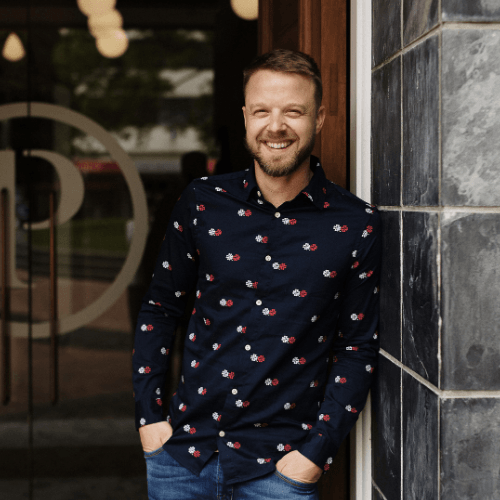
Artificial Intelligence isn’t coming to the Waikato
By David Hallett, Co-founder and Director, Company-X
Artificial Intelligence (AI) is already here. Across many sectors in our region, including agritech, healthcare, transport and defence, AI is reshaping the speed and expectations of our workforce, the pace of innovation, and our ability to compete in the marketplace. Are you ready for the disruption it’s bringing?
We need to broaden the conversation about AI in the Waikato, and fast. The hype has led many to equate AI solely with chat-based tools like GPT, but the real transformation is unfolding in the training and application of multimodal models. These models are trained on and capable of processing streaming data, images, videos, and audio in addition to text.
Multimodal models have given machines the ability to see, hear, interpret, and act in the context of their surroundings and to predict future events. The notion of using increasingly capable senses to augment existing capabilities that currently require support, or to replace them altogether, is where the value and the disruption is going to hit big for Waikato businesses.
The University of Waikato foresaw this opportunity in 2021 with the official launch of its dedicated Artificial Intelligence Institute. As the first of its kind in New Zealand, the institute was established to keep the country at the forefront of AI and to equip industries with the skills to turn data into life. It is a regional asset, with institute director Professor Albert Bifet leading research in AI for the environment, health, and business.
The Opportunity
AI adoption is rising, with many businesses reporting significant productivity gains, and the leaders are moving first on real-world, operational use-cases, not just text assistants.
Waikato’s advantage is applied innovation. Think computer vision on farms and factory floors, multimodal models that integrate text, images and sensor data for engineering, maintenance and logistics, and AI-assisted inspection that turns unstructured images, audio and video into decisions.
Local applications range from medical document automation and virtual reality defence simulations to automated fruit and produce sorting, each demonstrating how AI is already delivering value.
When you’re dreaming about the possibilities, you can collaborate with experts like Dr Hongyu Wang, an AI Scientist at Waikato-based software specialist Company-X. He holds a PhD in Computer Science, specialising in creating deep learning models with small and large data sets, computer vision and natural language processing. Partnering with clients he works to identify opportunities for commercial AI applications by utilising their existing data and systems.
Local medical practitioners have embraced AI-powered systems to capture patient consultations and concisely summarise their clinical notes, with clear assessments and treatment plans. The benefits include enabling practitioners to focus more closely on patients and reducing non-clinical administration time, essential in an already stretched health system.
The opportunity to lead from our region is amplified by the New Zealand Graduate School of Medicine’s plan to train digital-first doctors and embrace AI’s augmenting capabilities.
Surgeon and Interim Dean of Medicine at the University of Waikato, Professor David McCormack, is excited about the opportunities that will be realised within the New Zealand Graduate School of Medicine.
Professor McCormack says “AI represents a fantastic opportunity to advance patient care. However, we move forward with our eyes wide open. It will impact everything from education through diagnoses, management and follow up. Within the school, in keeping with our digital-first pedagogy, we will be fully exploring all that AI has to offer.”
The Disruption
Many organisations still see AI as a tool to license for their teams. This is the wrong vision.
Computer vision enabled cameras, acoustic microphones, environmental sensors, and edge compute at the roadside and riverside, are all part of the infrastructure that is enabling disruptive AI.
The teams that win will own capability, not just subscriptions. They’ll build physical and digital infrastructure, not just buy tools.
If your AI strategy consists of aspirations like “roll out a chatbot” or “enable a productivity assistant” you’re arming your competitors. The advantage now is multimodal, the fusion of text, audio, vision, data-streams, and geospatial that sees across and through your business.
Companies augmenting their physical operations with digital infrastructure and deploying multimodal AI stacks are setting the pace. They’re reducing downtime, predicting failures, optimising resources, and creating entirely new business models. Those who don’t adapt risk being locked into vendor dependency, higher costs, and slower innovation.
So how should Waikato businesses respond to this wave of disruption? The answer lies in moving from passive adoption to active capability-building. That’s where the Waikato Playbook comes in.
The Waikato Playbook
Select a use-case, then design, build and implement it.
Consider what signals you can monitor: video streams, audio, vibration, temperature, flow, and current draw. Combine these data sources with multimodal AI models to unlock powerful applications.
For example, you could automate safety detection on a production line, forecast predictive maintenance for high-value assets, extrapolate pasture variables using drone LiDAR and multispectral imagery, or identify defects in plant rooms.
Build skills in your teams.
AI-assisted operations rarely need human involvement, but they do require human oversight. Train your operators, managers, and business leaders on the limits of your models so they know when to step in.
It’s essential that your team understands how AI assists the organisation, so if something breaks, they know what to do. This could mean fixing it, finding a workaround, or escalating the issue.
Collaborate with local partners.
Connect with our region’s advanced AI and technology ecosystem to accelerate innovation. Local partnerships can unlock access to specialised expertise, create opportunities for joint problem-solving, and reduce costs through shared infrastructure.
By building strong networks, you both strengthen your own AI initiatives and contribute to a more resilient and competitive local economy.
The Response
Waikato has the ingredients: expert problem-solvers, world-class research, and industries where multimodal AI delivers real returns. The question is whether we’ll lead with strategic infrastructure or follow with commodity tools.
AI isn’t waiting to disrupt. And in the Waikato, it doesn’t have to.
ENDS

An Exercise in Effective Change
By Andrew Johnston, Executive Director, IT Partners
“What AI tool should we be using?”
It’s the question I hear most often in boardrooms, leadership meetings, and client conversations. But here’s the truth: it’s the wrong question.
Too many businesses are looking to AI as a technology decision. In reality, it’s a business transformation challenge, one that requires a mindset and culture shift, not just software selection. The real conversation isn’t about tools. It’s about change.
The Business of AI Starts with Fluency, Not Features
Our view is that every team should be targeting 2x productivity improvement through AI within the next 18 months. This is a new baseline for competitive survival, with the real return on return on investment being not about headcount change, but about leverage!
Intercom's engineering team put it perfectly: "If we were to literally hit pause on further advancements, any team leveraging existing AI tools effectively should expect at least double their current productivity." The key phrase here is "leveraging effectively" – most businesses aren't even trying.
A lift in productivity won’t come from deploying a single product. It will come from building what Harvard Business School describes as “digital athletes” – people who don’t just use tools, but train to perform with them. We’re talking about developing a new layer of capability in our workforce: tech-savvy, agile, growth-oriented professionals who thrive in data-rich environments. This is the conversation we should be having. Not “Which app should we use?”, but “How do we build fluency in AI, faster?”
What 2x Really Means in Practice
2x productivity means working smarter, with less friction and more focus. It might look like:
Faster, more accurate customer responses with higher quality and targeted personalisation
Reduced collaborative overhead, fewer meetings and less friction to get work done
Systematic identification of work that can be delegated to AI assistants
Enhanced capability development, example using AI as executive coach or strategic thinking partner
Elimination of technical and management debt that currently constrains performance
Improved quality of outputs or deliverables, with greater speed of delivery
At IT Partners, we use value curves (mapping efficiency against quality) to identify where AI can push performance forward. Instead of trading off speed for precision, we’re using AI to move the curve outward and achieve both efficiency improvement at a greater speed.
A real-world example: quote generation. Historically, teams needed to balance accuracy with time. With AI, we’re seeing opportunities to deliver faster quotes without compromising quality, something that was previously out of reach.
Culture Before Code
We can’t lead this shift without acknowledging fear. People are right to ask: “What does this mean for my job?”
The reality is this: Those who embrace AI amplify their value. Those who don’t may become more replaceable. This aside, I recommend taking a firm wide stance; AI is not about reducing headcount. It’s about freeing up capacity, growing revenue per team member, and reinvesting in people.
This only works if we create psychological safety, space to experiment, fail, learn, and grow. Following Palchinsk's simple experimentation framework:
1. Variation – Try multiple approaches
2. Survivability – Start small, fail safely
3. Selection – Double down on what works
Its important teams are encouraged to test and revisit ideas often. What doesn’t work today might be the breakthrough tomorrow – which given the advances of this technology is entirely possible – you need to benchmark your failures and re-test.
Beyond Surface-Level Implementation
The difference between Kmart and Walmart's approach to barcodes illustrates choice perfectly. Kmart treated barcodes as a shovel – a way to move products faster at checkout. Walmart used them as a treasure map – increasing visibility across their entire supply chain. Same technology. Entirely different thinking.
We need the Walmart mindset. Too many organisations are treating AI like a shovel, just another way to work faster. But the businesses that will thrive are treating AI like a treasure map: a means to uncover new value, unlock efficiencies, and reimagine how work gets done. For example: AI can help us write reports faster. But more importantly, it can help us ask whether we should be writing those reports at all.
The Waikato Advantage
Our region has always punched above its weight, on the back of strong relationships, grounded leadership, and pragmatic innovation. AI gives us a fresh opportunity to lead again.
But only if we approach it with the right mindset. Not as a tech trend, but as a strategic shift. Not with fear, but with curiosity and clarity.
The path forward isn’t about chasing the next big model. It’s about getting closer to the frontline, understanding real business problems, and creating the conditions for experimentation.
Three Questions Every Waikato Leader Should Ask
What's your specific productivity improvement target, measurement method, and timeline?
How will you integrate AI fluency into your team's development and performance processes?
What's your first experiment, and how will you measure its success?
AI isn’t coming, it’s already here. The organisations that act decisively and intentionally will define the next decade of growth in the Waikato.
Let’s make sure we’re one of them.
ENDS
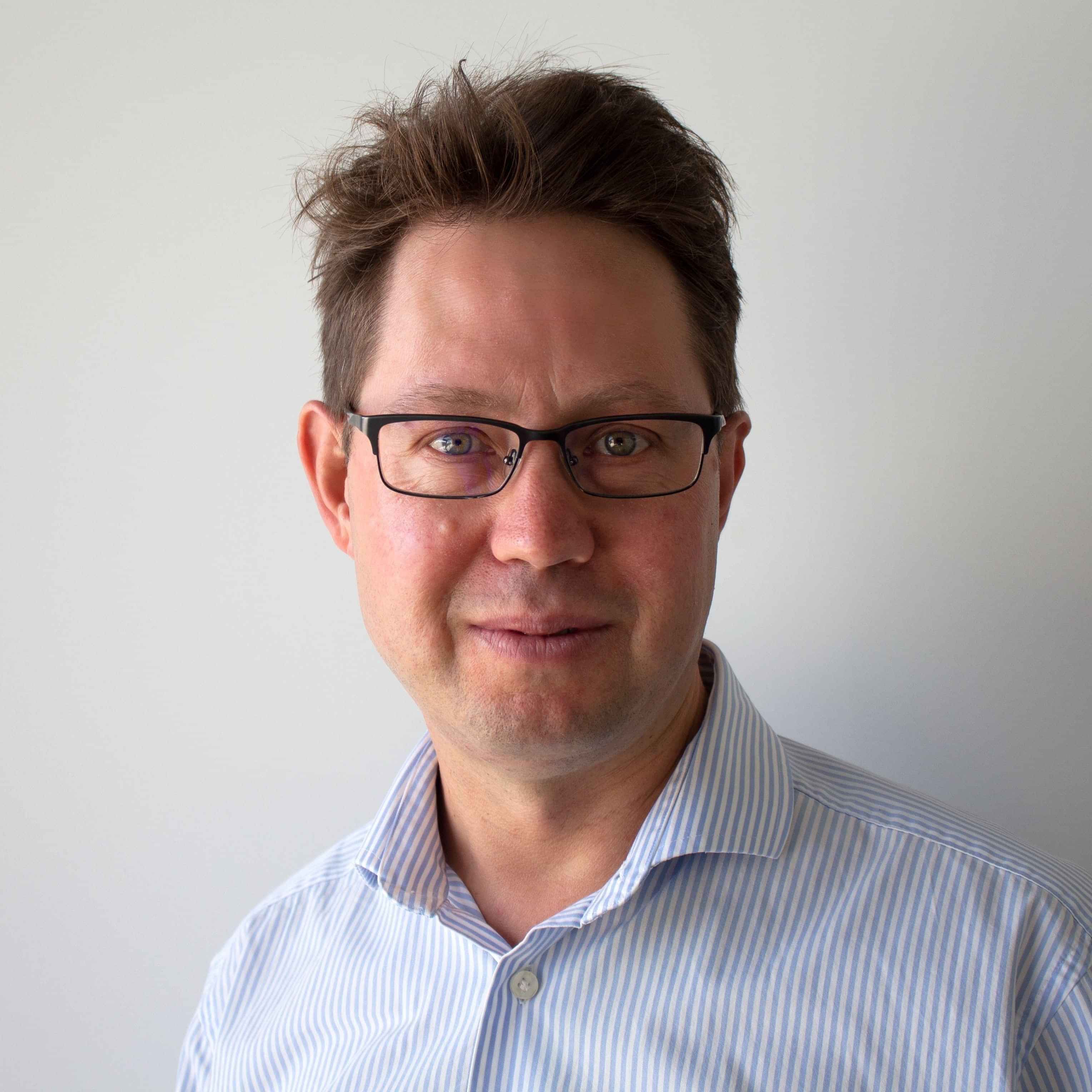
Past Articles
What are we waiting for: The future is ours to make
By Chris Joblin
It was no fluke. In February this year, media reported that Hamilton overtook Tauranga as New Zealand’s fastest growing city for the first time. And now the latest figures reported this month say we’ve done it again. 3.1% more people are living in the Tron than the same time last year. According to Statistics NZ and the University of Waikato we’re on track to overhaul Wellington as New Zealand’s second largest city somewhere between 2048 and 2058. But personally, I think we’ll get there a lot quicker - we are the only ones who can stop it from happening – if we choke.
So, in this article I want to outline the things we can do to secure our position. Auckland and Tauranga are hemmed in on an isthmus – their constraints are our opportunities.
Productive infrastructure
As a city and region, we focus a lot on social infrastructure such as Claudelands and the new theatre in Victoria Street. But, as a community, we rarely focus on the productive infrastructure we need for economic growth first so we can afford the social facilities. Just like they say on the airline health and safety videos – put on your own oxygen mask before you help others – productivity needs to come before pleasure if we really want to be able to afford to pay for it.
One example of productive infrastructure would be that we need to move heaven and earth to get a major data centre into Hamilton. This is a burgeoning sector of infrastructure where we need to wet our beaks. We have the room to grow, relative seismic stability and the major transmission lines that transect the edge of our city. These high-spec facilities could keep our construction sector engaged for years and facilitate new high value industries and employment. Upgrading the network to allow more of the electricity generated here to be supplied to our region is a major priority.
Regional connections
Secondly, we need to build out our road and rail connections to the Upper North Island. Based on current progress, repairs on the Hamilton-Taupiri section of the Waikato Expressway may actually never finish. So, we need to get better at building roads of national significance, and hopefully, the extension of the dual laning won’t stop at Piarere and will eventually carry on to Tauranga. These roads are literal economic arteries in our rapidly growing golden triangle.
We should also be looking at examples around the world of the role of fast, reliable passenger rail and its role in regional development as well as the economic models supporting investment. I am not dreaming about 320km per hour Shinkansen-style trains of Japan, just the well-run trains you see servicing the outer Melbourne commuter belt.
The brave growth decisions our region needs are unlikely to gain traction unless there is further amalgamation of local authorities. We really need some boundary realignment for Hamilton City to enable orderly development for the future city of half a million people and to move our thinking beyond the current developer belt. If local government can’t sort it out, then Central government need to be the ones to do it. Multiple planning frameworks equals slower and more expensive growth – it’s driving up the cost of the housing and we can’t afford the turf wars.
Visitor magnet
Our region enjoys some of New Zealand’s coolest visitor attractions in Hobbiton, Hamilton Gardens, the Waitomo Caves and Raglan – but we’re short a major draw card attraction in our city.
World class gardens – and we do have them – are table stakes. Where’s our Te Papa North, our Peter Jackson movie experience, or cultural tourism experience to draw in an extra three hundred thousand visitor nights per year to supercharge the accommodation and hospitality sector?
Opportunities regularly arise, but to date we have lacked the imagination and focus to make it stick.
Global opportunities
In wrapping up these thoughts I’d like to touch on global geo-political dividend that’s coming our way. There has been a lot of focus on the economic risks to New Zealand from an unstable world, but what about the opportunities? Many security sensitive businesses such as microchip manufacturers, will be looking to move sensitive facilities further away from obvious fracture zones in the region where world powers grind together like tectonic plates.
New Zealand is a member of the Five Eyes intelligence family. It has to bring some benefits – and one of them can be as a trusted locality for sensitive technology production. We already have quality electronics manufacturers in Hamilton, and scope to see more. We have a strong and growing technology sector, and 75% of our population growth in the past year has been from international migration into Hamilton – so we know we can grow and import the work force. Our time zone works perfectly to provide out of office services to the United States and Europe.
Nvidia II in East Hamilton? You bet. We have the space, the juice, the university – and we also have the time zone to be America’s back office, not just Wellington’s.
The future is ours to make.
Five reasons why the Waikato is onto a winner
By Chris Joblin
Head down slogging through the spring – whether it’s on the farm, a construction site, or downtown in a corporate office in central Hamilton - it’s easy to lose the sight of all the great things we have going for us. As I get ready to wrap up my role as CEO of a significant value creator for our region, I’m letting loose with my five reasons why I think the Waikato is on to a winner, and our moment in the sun is fast dawning. Here we go:
1. We’re part of a love triangle.
Hold your tea. It’s another way of talking about the increasing interdependence of Auckland-Hamilton-Tauranga. Each area has the opportunity to concentrate on its strengths and not feel so much need to go head-to-head on everything. The Waikato is the really productive engine-room in this economic troika, sitting alongside New Zealand’s most multi-national city Auckland and the Bay of Plenty that does well in all the lifestyle beauty parades. Waikato’s strengths lie in our ability to unlock constraints of both Auckland and Tauranga, their weaknesses will be to Waikato’s benefit.
2. Geographically, we’ve got the right moves.
The Waikato Expressway really put us on the map. From here you can cruise to Auckland in 90 minutes, Tauranga in less and punch down to Taupo and Taranaki or beyond. Like the drafting gate in a sheep race, it makes us an attractive place for distribution and logistics – you can draft your cargoes every which way. That was the thinking behind the formation of the Ruakura Superhub. Not everyone got it at first but now those really large previously out-of-town businesses like Maersk, Kmart and Big Chill are there to prove the point. This month’s news of new direct flight connections with the Gold Coast and Sydney puts the Aussie versions of Vegas right on our doorstep too.
3. We’re seen as relatively stable.
I’m not talking about political stability here but rather the geotech kind. Earthquakes are an unforgiving reality in New Zealand. Scientists (and many others) live in fear of a major movement in the Alpine Fault, transecting the country from Milford Sound out through the top of the South Island and exiting the country like a bullet wound around Napier/Hastings and out to the Hikurangi Trench. It’s not a question of if but when – hopefully a long, long time. Tragic events such as the Christchurch and Kaikoura earthquakes provide a glimpse of the reality and in my various property development roles I’ve noticed a distinct trend for government agencies and internationals to cover their bases with new offices in what is perceived as a more benign seismic environment in the Waikato. One of the things I’ve learnt is never say never – but if we can be that resilient province, let’s do it.
4. Plenty of smart cookies.
Waikato has provided smart science to the country since, well, practically forever. In comparatively recent years, notably with the establishment of the Ruakura training and research centre in 1888, our region began to further expand its reputation for excellence in agricultural science. It’s a space we still excel at today with the likes of Dairy NZ, Livestock Improvement Corporation, Gallagher and others. I wanted to say Halter too – but that was one that got away. Its founder Craig Piggott grew up on a dairy farm in the Waikato and obviously nurtured the idea here. It just got away on us when he headed up the road to the University of Auckland and then Rocket Lab. Today we have new generations of smart cookies here such as the teams at Aware Group, Company-X, and Dynamo6 carrying the tech torch into the cloud-distributed, AI-enabled, digital-distance.
5. Stealth moves
As everyone knows – even The Chiefs – the world loves a stealth move and the Waikato has them in spades. Every time we show an out-of-town guest to the Ruakura Superhub it bowls them over. We deliver great infrastructure (and delivered it on an Australasian scale.) Entities like Rabobank NZ, Maersk and Kmart obviously cottoned on to the Tron, and others are on their way. Besides, don’t tell Tauranga, we are actually a secret slayer on the lifestyle front. From the world-class left hander breaking on the rocks at Manu Bay to the bush clad solitude of New Chums beach in the Coromandel. It’s all in our region and we should celebrate it. Credit where it's due: we also have an awesome hospitality scene led by some world-class eateries in Palate, Chim Choo Ree and Gothenburg.
Thanks for bearing with my reckons on this fantastic region where we live. My next column (second of three) will lean into three economic areas where the Waikato needs to wet its beak.
Preparing the waikato for a changing world
Written by Chris Joblin
“Clowns to the left of me, jokers to the right …” – you won’t hear me quote Bob Dylan often, but the words seem just right to describe some of the acting out we’re seeing on the global stage. This is the third of my articles for Waikato Chamber on the economic potential of the Waikato region and we need to talk about the r-word – global risk.
The Rising Global Risk Landscape
Traditionally we have relied on distance as a form of economic moat for New Zealand, my message is that Waikato businesses need to position themselves to prepare for disruption and even more ideally – to be the disruptors.
Recent events have markedly increased geopolitical risk both globally and locally. With gobsmacking speed we’ve seen the US moving away from the western alliance and tearing down mutual trust as defence partners. Mystery ships, one of them with Tongan badging, have been circling the globe attacking undersea communications cables and there has been targeted cyber disruption to infrastructure. Don’t forget the Chinese naval exercises in the Tasman sea, an eruption of trade wars and the Cook Islands giving the diplomatic equivalent of the middle finger to New Zealand as it followed Solomon and Kiribati into deals with China.
In just the past few weeks more than two trillion dollars of new defence spending has been announced across Europe and the Asia pacific region. Even New Zealand is talking about increasing defence spending to 2% of GDP. It feels like 1938 all over again as nations scrabble to get their hands on natural resources e.g. oil & gas, rare earths. So, what does this mean for NZ strategically?
I don’t want to be too bleak. Global uncertainty presents risk and opportunity for our country and the region and business needs to take the time to adjust its strategies to react to this new paradigm.
New Zealand’s Strategic Preparedness
Firstly, in my view we need to increase our self-reliance both for our economy and also for defence with investments into both defence and infrastructure, and greater onshoring of strategic materials.
As the recent naval exercises in the Tasman have shown, our sea and air connections to the rest of the world, which we rely on so much, are vulnerable to being contested and potentially disrupted.
Our defence capability will need to be scaled to be able to protect these critical assets and communication lines.
New Zealand has abundant natural resources including water, renewable energy, oil & gas, precious metals, and rare earth minerals. We compare ourselves a lot to the Scandinavian countries but seldom mention their economies have been underpinned by unlocking their natural endowments particularly in oil and gas.
Strategically unlocking some of our natural endowments, while mitigating impacts on the environment, is a way we can fund some of the critical investments we now require to increase our national resilience and our standard of living.
We need new hydro power generation to support wind and solar. Electricity generation is inadequate to power our existing economy let alone new power requirements driven by AI and data centres.
For strategic resilience we should be onshoring more production and refining of oil and gas, and we should back up the bus on Marsden Point to reduce reliance on petroleum shipments from Singapore. We should also unlock more of our mineral deposits including precious metals and rare earth minerals which could underpin new high-tech manufacturing.
So where are the opportunities for New Zealand and the Waikato?
Demand for our food and fibre products is going to continue to grow. The emergence of potential trade wars between the US, China and Europe is going to see these economies seek imports from new sources, potentially creating new markets for New Zealand’s exporters.
We have many NZ companies working in defence and security related industries. Some of these are Waikato-based. The global demand for defence related innovation and capability is growing exponentially and will drive investment into AI. Robotics, autonomous vehicles and cyber to name a few.
Waikato’s Economic Opportunities
The Waikato is very well placed to take advantage of this through our existing technology sector and through the University of Waikato whose robotics and AI are world renowned.
The NZ military will need to make significant investments in surveillance, robootic technology (drones), AI and missile technology. Our region can expand on our existing industry to meet some of these requirements. Again, there are Waikato-based firms, as well as our University who are global leaders in some of these fields. We have many more Rocket Labs yet to emerge if we focus and collaborate on the opportunity.
Global companies are reassessing where to produce sensitive technology currently produced in Southeast Asia. Microchip, aeronautical, and pharmaceutical industries all have the potential to relocate. Why not here?
We have the critical components to attract these industries to the Waikato with our young and educated population, access to clean energy, raw materials, and relative security of our location compared to some of the world’s political and military fault lines.
So, what should Waikato business be thinking about?
We have had the recent experience of Covid which gives a good starting point for business to think about and plan for potential disruption.
Preparing Waikato Businesses for Disruption
We also need to think about the balance between onshoring and ‘just in time’ models for our supply chain and supply chain security. We need to have diversity of suppliers including domestically. Where needed, you may need to invest in advance to grow your supplier base.
Obviously, with threats of tariffs bouncing around – we need to think about diversifying our global customer base for both our key commodities and our niche value-added products.
Maintaining a strong balance sheet can help absorb short term disruption to global supply chains.
Attracting High-Tech Industries
An area that needs a lot more focus is cyber security. Businesses need to invest in protecting their core systems and environments and understand the security positions of their core suppliers and partners. The threat of cyber disruption will continue to grow in is sophistication and occurrence. From key global players in the IT sector, I have heard that New Zealand is around a decade behind Australia in being attuned to understanding the strategic risks in this area.
Everyone hopes that international actors will ‘calm the farm’ and realise that if conflict comes, everybody loses. Let’s hope and support work for the best outcome, while preparing for the worst. Either way, as Mr Dylan said way back in the 1960’s – the times are definitely a-changing.

